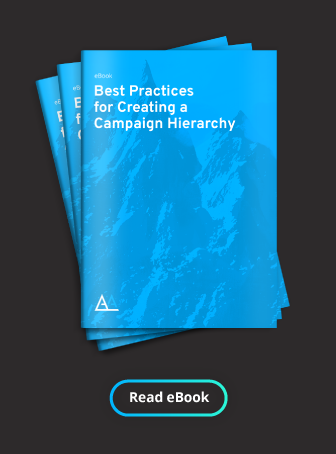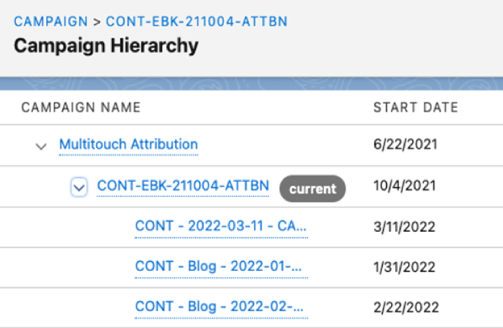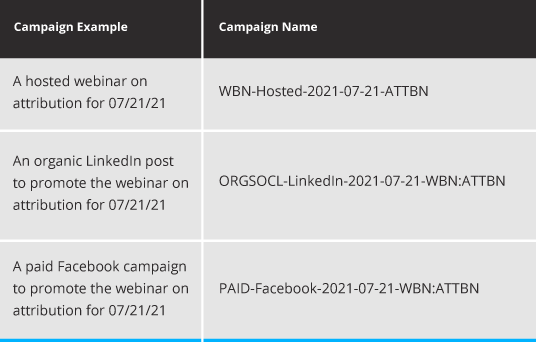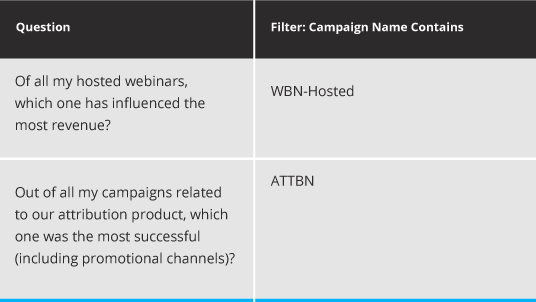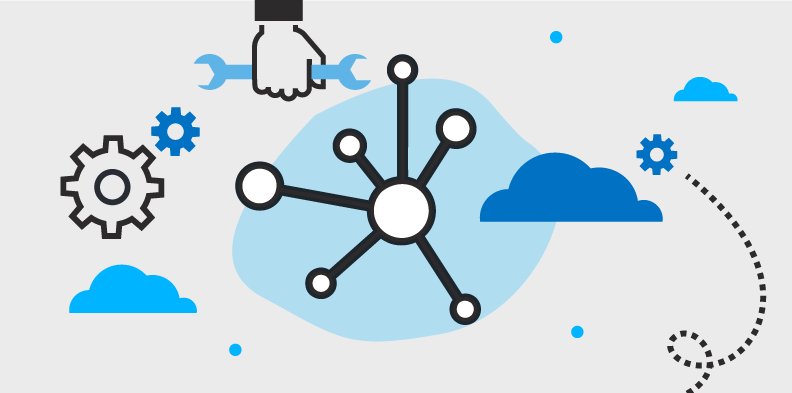
During our Salesforce office hours, a question that always comes up is, what best practice recommendations do you have for building a campaign hierarchy?
Why? Because a solid campaign structure is one of the foundational elements that needs to be in place to attain campaign attribution and every marketing team is working to achieve this.
Campaign hierarchies do not have to be complicated, but often they turn out to be after teams start to consider the following questions:
- How granular should we get when we have five hierarchical levels to work with?
- What parent and child relationships should we have as we can only pull in one level below in a Salesforce report?
- How should we separate out campaigns from year to year?
- How should we incorporate the different products or services that our campaigns relate to?
- What are the best practices we can use for standardized naming conventions?
The Three Levels of Your Salesforce Campaign Hierarchy
Grandparent, parent, child, or Solution / Product, asset, and then promotional channel. Using three levels (fig. 1) keeps the foundational structure for reporting simple, but still allows marketers to get the granular data that they need. Arranging the data in this way allows for teams to answer key campaign performance questions.
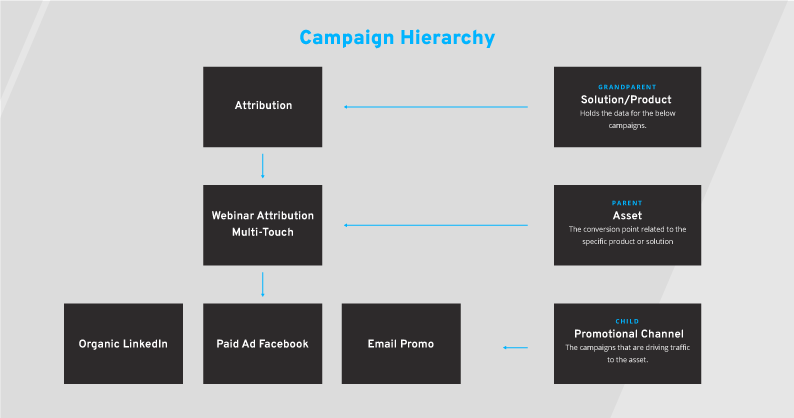
Figure 1, SaaScend Campaign Hierarchy – An example of the hierarchical structure in practice for a webinar on multi-touch attribution that uses organic LinkedIn, paid Facebook ads, and promotional emails to drive registrations.
Solution / Product Level
Out of all my campaigns, which product or solution led to pipeline influence and closed won deals?
Out of my different campaign types (webinars, eBooks, paid media, events etc.) which efforts were the most successful?
Out of all my different types of promotional channels (paid media, organic, content syndication etc.) which one drove the most conversions?
Figure 3, Salesforce Campaign Hierarchy screenshot, an example of the three-level approach.
For example (fig. 3), the SaaScend eBook, The Ultimate Guide for Campaign Attribution is a campaign at the asset or parent level. This asset is related to our Attribution solution, so it is underneath it. Blog articles, such as this one, are linked to the eBook as promotional channels, so the eBook sits above them as the Parent Campaign. This screenshot from Salesforce is exactly how the three-level hierarchy should look when campaigns are created and associated with the appropriate parent.
How To Build the Three-Level Campaign Hierarchy
❶ Think about the different products or services that your company provides. These become your Grandparent campaigns at the Solution level.
❷ Next, consider the types of campaigns that you execute, your webinars, events, eBooks, search, website, free trials etc. These campaigns become your Parent Campaigns at the Asset level.
❸ Lastly, any campaign that is run to drive traffic to your campaigns at the Asset level is a Child campaign at the Promotional Channel level, for example, paid media, organic social, blog articles, content syndication, email nurtures etc.
Any time you create a new campaign at the asset level in Salesforce, think, what product or solution does it relate to? That would be the Parent Campaign. After the campaign at the asset level is created, the next step would be to create all of the promotional channel campaigns that you will use to drive traffic to the asset, making sure the asset is noted as the Parent Campaign.
The Power of Naming Conventions
Addressing the questions from earlier that marketers often start considering when they go to create a campaign hierarchy:
What parent and child relationships should we have as we can only pull in one level below in a Salesforce report? If the report is filtered by Parent Campaign and a campaign at the solution level is used as the filter, the report will only be able to pull in data at the parent or asset level.
How will teams know which promotional channels related to their products drove the most conversions? This can be solved with a naming structure.
How should we separate out campaigns from year to year? Marketers can use the start date fields to assist with this, but the year can also be added to the naming structure.
What are the best practices we can use for standardized naming conventions? At SaaScend, we use a naming structure organized by campaign type, subtype, the year, and then the name of the campaign (fig. 4).
-
-
- Marketing Asset / Conversion Draw = TYPE
- Specified Format = SUBTYPE
- Date = YYMMDD
- Asset Name
-
Think of the subtype as a descriptor of the more broad type. For example, if the Type is Content, then the subtype tells the format of the content, blog, eBook, one-pager, case study, etc. If the Type is Webinar, the kind of webinar that it is would be the subtype, hosted, on demand, sponsored, partner, etc.
Figure 4 Caption: SaaScend Campaign Naming Structure – Demonstrating the names used for a webinar along with two of its promotional channels.
When using abbreviations make sure that everyone on the team that will be creating campaigns understands what they are, so that they can be used consistently across the board, making it easy for the team to filter by campaign name and not miss any data. Abbreviations are common because the Campaign Name field in Salesforce only allows for 80 characters.
This type of naming structure enables marketers to get as granular as they would like, posing certain questions and then filtering by campaign name in a report to pull performance data.
Acting Now to Establish Your Campaign Hierarchy
If the campaign architecture is not established, then campaigns will continue to be created without proper parents and without a consistent naming structure, making it difficult to quickly pull reports and get the campaign performance data needed.
Using the three-level campaign hierarchy method keeps the structure simple, but also granular enough especially when implemented with a proper campaign nomenclature.

250 RECORDS FREE
Reduce Email Bounce Rates with Job Change Tracking

